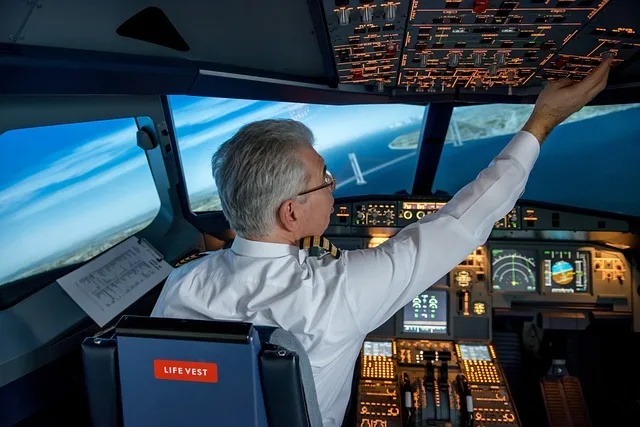
Do you dream of flying high in the skies, soaring among the clouds to far-off destinations? Becoming an airline pilot is a challenging yet rewarding journey. It requires extensive training and discipline before being trusted with hundreds (or sometimes thousands) of passengers as their captains.
Read on if you’ve always wanted to gain wings and become an airline pilot! This blog post covers all aspects of becoming an airline pilot, including the required certifications, qualifications, and more.
Consider Your Academic Qualifications
The first step for aspiring pilots wanting to turn their passion into a career is to examine their academic qualifications. Those looking to become an airline pilot must have attained a college degree, finished high school, and successfully completed airplane pilot training.
While this may seem daunting, the rewards you will gain regarding career satisfaction and progression are worth the effort. After taking care of the necessary academic qualifications, hopefuls can start the process of becoming an airline pilot.
Research The Different Types of Pilot Licenses Available
When considering an aviation career, researching the different types of pilot licenses is vital. There are multiple types of licenses available for pilots to pursue, such as the private pilot license (PPL), commercial pilot license (CPL), airline transport pilot license (ATPL), and flight instructor rating (FIR).
To obtain a PPL, one must have at least 40 hours of flight time, 10 hours of solo flight, and 5 hours of instrument training. The CPL requires 250 hours of flight time, emphasizing cross-country flights and instrument operations. The ATPL is the highest level license, comes with at least 1,500 hours of flying experience, and passes medical and theory exams set by the Federal Aviation Administration. Lastly, the FIR permits pilots to teach others how to fly.
Proper research into all these specialized licenses can open up countless opportunities within aviation and make aspiring pilots more informed as they pursue their dreams.
Take An FAA Medical Exam To Ensure You Are Fit for Flying
A mandatory requirement of getting a pilot’s license is to successfully pass a Federal Aviation Administration (FAA) medical exam. This exam will analyze your overall physical health and ensure that everything from your vision to your cardiovascular system meets the standards necessary for flight. Even if you feel 100% healthy, you must take this test as it will help identify any possible health issues that could become dangerous if not addressed before attempting to fly an aircraft
Getting cheap insurance premiums may also be difficult if you don’t have this formal approval from the FAA. You can take the exam at any approved aviation health center, so check their website for information or contact them directly with any specific inquiry or questions.
Obtain An Appropriate Pilot License From The FAA
Becoming an airline pilot starts with obtaining an appropriate license from the FAA. You can achieve this by completing all the requirements, such as medical exams and tests on aeronautical knowledge. Once these are completed satisfactorily, future pilots must take a written exam to demonstrate their understanding of all aviation fundamentals.
Those already active in the aviation industry, may be eligible for additional programs and courses which will help them gain the necessary qualifications faster and easier. With the right capabilities and eagerness to learn, aspiring aviators can go on to make a career out of flying jets and crafts around the world.
Get Certified in Airline Transport Pilot Ratings And Experience On Aircraft
Becoming an airline pilot requires rigorous training and certification. The first step is to get certified in airline transport pilot ratings. This includes completing ground school and passing a written, oral, and practical test through the Federal Aviation Administration (FAA). Furthermore, prospective pilots must gain experience on several aircraft types to gain their Multi-Engine Rating, Instrument Rating, and Commercial Pilot License.
Experienced aviation professionals sanction this process of gaining the necessary qualifications for career progression in commercial aviation operations. Regardless of the chosen route to becoming an airline pilot, aspiring professionals should be prepared to work hard to achieve their desired outcome. But with hard work comes great rewards with the opportunity to fly a world-class fleet of aircraft all around the globe while significantly impacting how we travel!
Look For Available Job Openings And Apply for Them
Becoming an airline pilot is an exciting and rewarding career, but it can seem daunting if you need help knowing where to start. One of the essential steps is seeking job openings that suit your needs and qualifications. To do this easily, research different airlines in your area or through online resources that list available job openings.
After identifying a few potential employers, read all instructions provided by the airline thoroughly, such as submitting a resume or completing an online assessment. With a little extra effort and research, you’ll be on your way to becoming a professional airline pilot.
In conclusion, becoming an airline pilot involves a complex process that requires dedication and hard work. Considering all the steps in here and the effort invested in such a dreamy but arduous process, it is clear why many aspiring pilots feel honored and proud when they finally become an airline pilots.
- Sagittarius Man & Gemini Woman Love and Sex Compatibility - January 31, 2024
- Taurus Ascendant Rising Personality Traits in Men (Guide) - January 31, 2024
- How to Seduce and Attract a Sagittarius Man (Seduction Tips) - January 31, 2024
